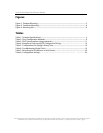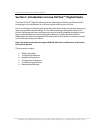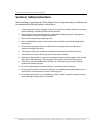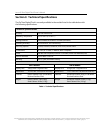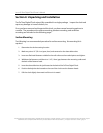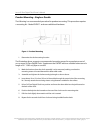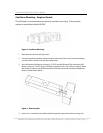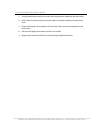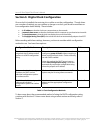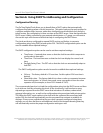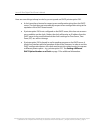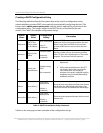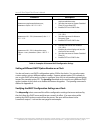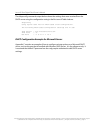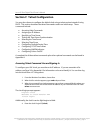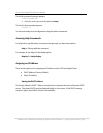
Inova OnTime Digital Clock Owner's Manual
All claims based on information publicly available at time of printing. All other product or service names mentioned in this document may be
trademarks of the companies with which they are associated.
© 2007 Inova Solutions. | All rights reserved. 6.12.2007 | page 8
Section 5: Digital Clock Configuration
Once a clock is installed, the next step is to confirm or set the configuration . Though there
are a number of settings you can confirm or change on a clock, you should concentrate on
four configuration items initially. These include:
• An IP address so that the clock can communicate on the network.
• A network time server so that the clock knows which computer to synchronize its time with.
• The local time zone so that the clock can display the correct local time.
• The Daylight Saving Time (DST) rule so that the clock can automatically adapt to local DST.
Before working with these settings, however, you have to consider which configuration
method to use. You have three options:
Configuration Method Description Reference
The recommended method is to
assign both the IP address and all
options via a DHCP configuration
string.
This method is the only way to address and
configure a group of clocks without requiring a
telnet session into each clock. Clocks are factory
set with DHCP enabled.
Using this method, the DHCP server is set up
with a clock configuration string. Clocks will
automatically request the configuration string
when they request an IP address.
Section 6
The second method is to assign an
IP address via DHCP and set
individual configuration options
via a telnet session.
Clocks are factory set with DHCP enabled. The
options may be set using telnet commands.
Section 7
The third method is to assign an IP
address and individual
configuration options via a telnet
session.
Use telnet commands to assign both a static IP
address and the appropriate configuration
options.
Section 7
Table 2: Clock Configuration Methods
To learn more about the recommended method of using the DHCP configuration string,
continue with Section 6. To learn more about using a telnet session exclusively, refer to
Section 7.



